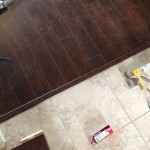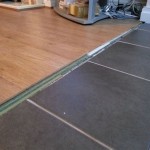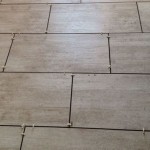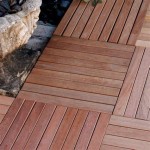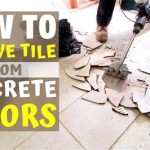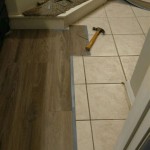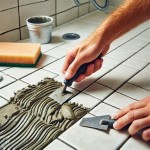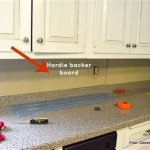Can You Tile Directly On Cement Board In Shower?
The question of whether you can tile directly on cement board in a shower is a common one among DIY enthusiasts and professional contractors alike. Cement board is a popular choice for shower wall substrates due to its water-resistant properties, but it is crucial to understand the proper installation techniques to ensure a successful and durable shower. While it is possible to tile directly onto cement board, there are specific considerations and best practices that must be followed to avoid potential issues.
Understanding Cement Board and Its Properties
Cement board is a rigid and durable material made from Portland cement, sand, and cellulose fibers. It offers excellent water resistance and is often used in areas exposed to moisture, such as showers and bathrooms. Cement board is available in various thicknesses, with 1/2 inch being the most common for shower walls. To achieve optimal water resistance, the cement board must be properly installed and sealed. The smooth, flat surface of cement board provides a suitable base for tiling, but direct tiling may not always be the best approach.
Direct Tiling: Considerations and Best Practices
Directly tiling on cement board in a shower is possible, but it requires careful planning and adherence to specific guidelines. Here are some key points to consider:
1. Moisture Barrier and Waterproofing
Before tiling directly on cement board, a proper moisture barrier is essential. This typically involves applying a waterproof membrane over the cement board, creating a barrier against water penetration. The membrane can be liquid-applied, sheet-applied, or a combination of both. Using a waterproof membrane is crucial to prevent water from reaching the substrate and causing damage, particularly in areas with high moisture exposure, such as shower niches and around the shower pan.
2. Thin-Set Mortar and Bonding
When tiling directly on cement board, using a thin-set mortar designed for bonding to cementitious substrates is crucial. Thin-set mortar provides a strong bond between the tiles and the cement board. Always follow the manufacturer's instructions regarding application and curing times. The thin-set mortar should be applied evenly over the cement board, ensuring complete coverage and adequate bonding capacity.
3. Tile Size and Weight
Consider both the size and weight of the tiles. Larger or heavier tiles may require additional support to ensure adequate bonding and prevent sagging. In these cases, consider using a modified thin-set mortar for increased bonding strength. Alternatively, using a backer board system with increased thickness might be necessary to provide additional support for heavier tiles.
4. Expansion Joints and Movement
To accommodate movement in the shower walls due to temperature fluctuations and moisture changes, expansion joints are recommended. These joints are typically installed at strategic locations, such as around corners, door openings, and where different materials meet. Expansion joints allow for movement without stressing the tiles or the substrate, preventing cracking or delamination.
Alternatives to Direct Tiling: Backer Board Systems
While direct tiling on cement board is feasible, using a backer board system is often considered a more reliable and robust approach. Backer board systems consist of pre-fabricated panels with high water resistance and superior strength. These panels are typically installed over the cement board, providing a smooth and even surface for tiling. Backer board systems offer several advantages, including:
1. Enhanced Water Resistance
Backer board systems are engineered for high water resistance, offering greater assurance against water penetration and the potential for water damage. This is particularly important in areas with high moisture exposure, such as shower floors and walls.
2. Increased Strength and Stability
Backer board systems provide a rigid and stable base for tiling, minimizing the risk of tile movement or delamination. The increased strength and stability are essential for ensuring a lasting and durable shower installation.
3. Simplified Installation
Backer board panels are typically pre-cut and designed for easy installation, requiring less labor and expertise compared to direct tiling on cement board. This can save time and effort during the shower construction process.
Conclusion
While it is possible to tile directly on cement board in a shower, it is crucial to understand the specific considerations and best practices to ensure a successful and durable installation. Using a waterproof membrane, appropriate thin-set mortar, and paying attention to tile size and expansion joints are essential steps. However, utilizing a backer board system often offers superior water resistance, increased strength, and simplified installation, making it a more reliable and preferred approach for shower construction.

Installing Cement Board In The Bathroom Angie S Roost

The Best Way To Waterproof Your Shower Before Tiling Inspired Hive

Tile Backerboard Material Options Fine Homebuilding

How To Install Cement Board For Tile Projects Diy Family Handyman

Tile Installation Backer Board Around A Bathtub Family Handyman

Installing Cement Board In The Bathroom Angie S Roost

Tile Backer Board Breakdown Which One Is Best For Showers Diytileguy

How To Install Durock Cement Board Making Maanita

Easily Install Cement Board To Prep For Tile Installation

Tile Backer Board Installation Key Steps For A Quality Armchair Builder Blog Build Renovate Repair Your Own Home Save Money As An Owner
Related Posts

